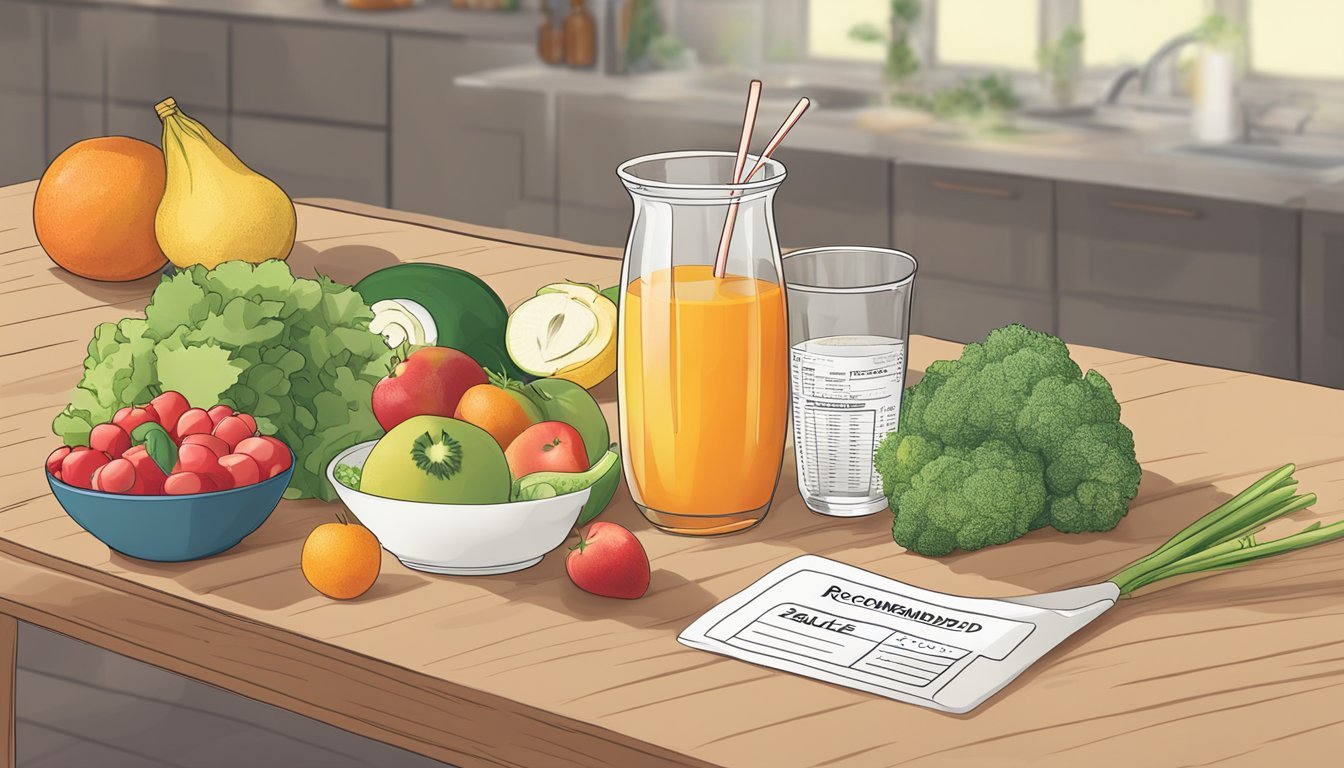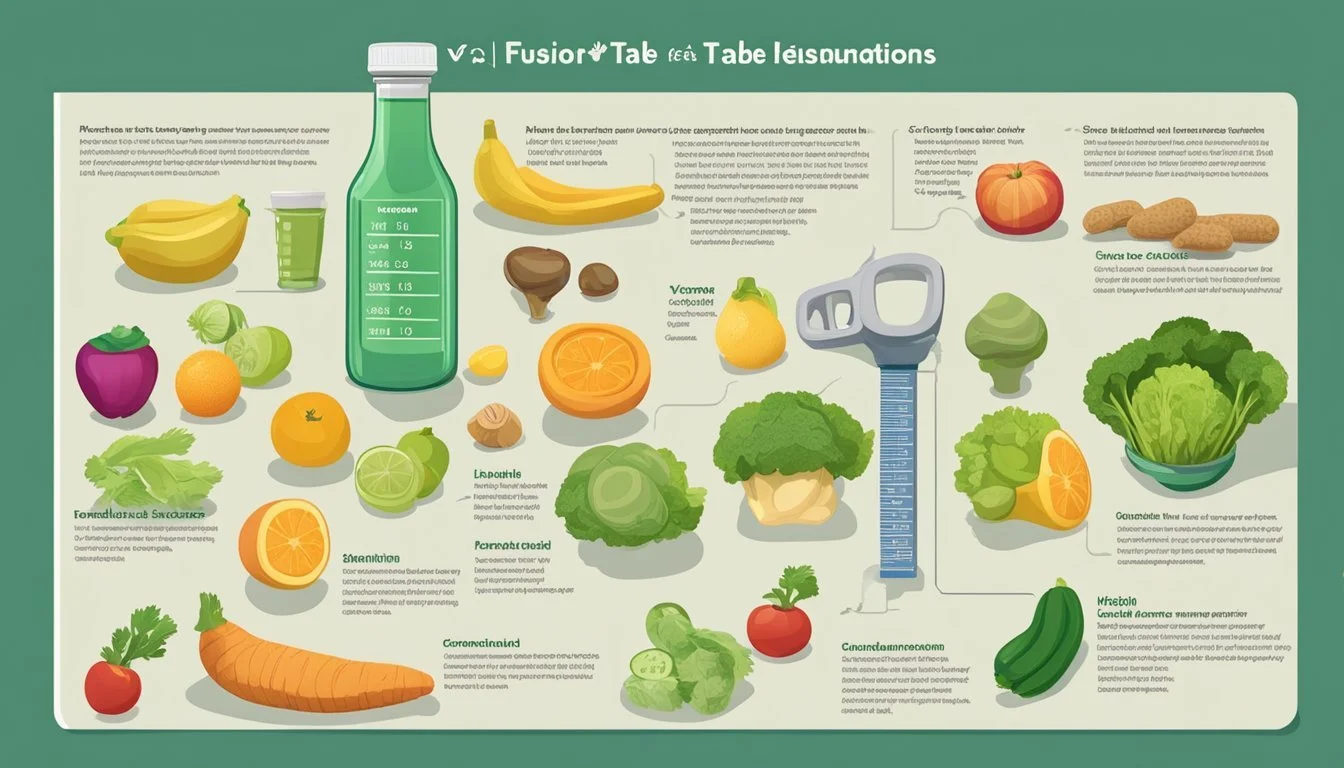How Many Servings of V-Fusion Is Too Much
Understanding Safe Consumption
When considering how much V-Fusion juice is appropriate for daily consumption, it is essential to weigh the benefits against potential drawbacks. V-Fusion offers a convenient way to integrate more fruits and vegetables into one's diet, providing essential nutrients and vitamins. Excessive consumption, however, can lead to an intake of too much sugar and calories, even if they come from natural sources.
Balancing your diet is key. While V-Fusion can be a healthy addition, relying solely on juice for vegetable servings may not provide the variety and fiber that whole foods offer. It’s recommended to complement V-Fusion with actual fruits and vegetables to ensure a well-rounded nutrient intake.
Moderation is crucial. Drinking one or two servings of V-Fusion daily can be beneficial, but surpassing this can contribute to an unwanted increase in caloric and sugar intake.
Overview of V-Fusion
V-Fusion is a fruit and vegetable juice blend created by Campbell’s, known for its mix of natural ingredients and high nutrient content. This section explores its ingredients, nutritional profile, and health benefits.
Understanding V-Fusion Ingredients
V-Fusion is a unique blend of fruit and vegetable juices. Campbell’s markets this product as providing both fruit and vegetable servings in every glass.
The ingredients usually include a mix of juice concentrates from vegetables like carrots and tomatoes, and fruits such as apples, strawberries, and raspberries. This blend offers a convenient way to consume multiple servings of vegetables and fruits without added preservatives.
Natural sweeteners derived from fruit juices can be present, making it both nutritious and palatable.
Nutritional Profile
A standard serving of V-Fusion, usually 8 ounces, provides an array of essential nutrients. It typically contains around 50 calories, 0 grams of fat, and 0 grams of cholesterol. The carbohydrate content is approximately 13 grams, with sugar accounting for about 10 grams of this total.
Key Nutritional Components:
Calories: ~50
Protein: 1g
Carbs: 13g
Sugars: ~10g
Fat: 0g
Cholesterol: 0mg
V-Fusion is rich in vitamins A and C, providing significant percentages of the daily recommended intake. It also contains potassium, which supports cardiovascular health.
Health Claims and Benefits
V-Fusion aims to offer a healthy alternative to traditional fruit juices by incorporating vegetables into its blend. Campbell’s promotes it as a way to obtain the equivalent of 2 servings of vegetables in each 8-ounce glass. This can be particularly beneficial for individuals who struggle to meet daily vegetable intake through whole foods alone.
The juice's high vitamin C content supports immune function, while vitamin A is essential for vision and skin health. The presence of natural sugars and the absence of added preservatives make it a more appealing choice for health-conscious consumers compared to other sugary beverages.
Regular consumption can contribute to better overall nutrition, but it's essential to be mindful of sugar intake if consuming multiple servings a day.
Safe Consumption Levels
Understanding how many servings of V-Fusion is appropriate is essential for maintaining a balanced diet and supporting overall health. This section breaks down the daily recommendations for fruit and vegetable intake and explains the serving sizes to help optimize consumption without exceeding healthy limits.
Daily Recommendations for Fruit and Vegetable Intake
The Dietary Guidelines for Americans suggest adults should consume a variety of fruits and vegetables. Generally, adults should aim for about 2 cups of fruit and 2.5 cups of vegetables per day. This recommendation helps ensure sufficient intake of necessary vitamins, minerals, and fiber.
V-Fusion can contribute to these daily goals. Each serving typically contains both fruit and vegetable juices, allowing individuals to conveniently meet their dietary needs. However, it's crucial to be mindful of the sugar and sodium content within these drinks.
The American Heart Association advises keeping added sugars to less than 25 grams per day for women and 36 grams for men. Being aware of this can help prevent excessive sugar consumption from V-Fusion and other sources.
Understanding Serving Size
A standard serving size for V-Fusion is usually measured at 8 fluid ounces. This amount can be compared to other familiar serving sizes, such as a half-cup of raw vegetables or a medium-sized piece of fruit. It is essential to make these comparisons to avoid overconsumption.
For instance, the Centers for Disease Control and Prevention emphasizes portion control in promoting healthy eating habits. By understanding how servings of V-Fusion fit into the daily diet, one can better manage total caloric and nutrient intake.
Paying attention to labels for sugar and sodium content is necessary. Some V-Fusion varieties may have higher levels of these components, impacting heart health and blood pressure management. Opting for low-sodium and no-added-sugar versions can be a healthier choice.
Health Implications of Overconsumption
Consuming too much V-Fusion can lead to various health concerns, primarily due to its sugar, calorie, and sodium content, as well as the potential for nutrient imbalance.
Sugar and Caloric Content Concerns
V-Fusion beverages often contain high levels of sugars, which can easily contribute to excessive caloric intake.
High sugar consumption is linked to obesity, type 2 diabetes, and cardiovascular diseases.
Drinking multiple servings per day can lead to a significant surplus of calories, causing weight gain and associated health risks.
Furthermore, high sugar levels can lead to dental problems like cavities and tooth decay, particularly in children.
To maintain a balanced diet, it's essential to monitor and limit the intake of sugary beverages to prevent these health issues.
Sodium Intake and Related Health Issues
Excess sodium is another concern with overconsumption of V-Fusion.
High sodium intake can elevate blood pressure, posing a risk for hypertension and heart disease.
Most adults should aim to consume less than 2,300 milligrams of sodium per day, and children even less according to dietary guidelines.
Consuming multiple servings of V-Fusion daily can quickly push sodium levels beyond safe limits.
This can be particularly problematic for individuals with pre-existing heart conditions or those at risk for developing hypertension.
Monitoring sodium intake from all dietary sources is critical to maintain cardiovascular health.
Potential Risk of Nutrient Imbalance
While V-Fusion provides vitamins and nutrients, overconsumption can lead to an imbalance.
Certain vitamins and minerals, when consumed in excess, can cause adverse health effects. For instance, too much vitamin A can lead to toxicity, causing symptoms like nausea, dizziness, and even liver damage.
Similarly, excessive intake of specific nutrients from fortified beverages can overshadow the consumption of essential nutrients from whole foods.
This imbalance can reduce the overall nutritional quality of one's diet, emphasizing the importance of moderation and diversifying food sources.
Balancing V-Fusion with other nutritious foods ensures a well-rounded and healthy diet.
Comparing V-Fusion to Whole Fruits and Vegetables
V-Fusion juice can provide nutritional benefits similar to whole fruits and vegetables, but key differences in nutrient density and fiber content may impact its overall health effects.
Nutrient Density and Absorption
V-Fusion juice often contains a high concentration of vitamins and minerals. For instance, a serving may offer substantial amounts of vitamins A and C.
While these nutrients are essential, the absorption from juice can differ due to the lack of additional beneficial compounds found in whole foods.
Whole fruits and vegetables offer a complex matrix of nutrients, including phytochemicals and antioxidants. These compounds interact and may enhance nutrient absorption and utilization in the body.
Whole foods also retain the structural integrity, which helps in slowing down the digestion process. This allows for a steady release of nutrients, aiding in better absorption.
In contrast, juices, including V-Fusion, can cause rapid spikes in blood sugar levels due to their liquid form. This can affect how nutrients are absorbed and used by the body.
Fiber Content and Digestive Health
Fiber is a crucial component often removed during the juicing process. Whole fruits and vegetables are rich in both soluble and insoluble fiber, important for maintaining digestive health.
Soluble fiber helps regulate blood sugar levels and lowers cholesterol, while insoluble fiber aids in bowel movement regularity. Consuming whole vegetables and fruits supports better fiber intake, contributing to overall digestive health.
V-Fusion, although nutrient-rich, significantly lacks dietary fiber. Regular reliance on juice as a vegetable serving can lead to suboptimal fiber intake, potentially affecting digestive health.
This reduced fiber content in V-Fusion also means missing out on the benefits of feeling full longer, which can aid in weight management and control overeating.
For a balanced diet, incorporating whole fruits and vegetables is essential due to their comprehensive health benefits, which are not fully replicated in juice form.
Analysis of V-Fusion Varieties
When examining different V-Fusion varieties, key points to consider include nutrient content, flavor options, and any additional ingredients like added sugars or sodium levels. Each variety brings its unique blend of benefits and potential downsides.
V8 Essential Antioxidants
V8 Essential Antioxidants is positioned as a health-conscious choice, emphasizing its rich antioxidant content. Antioxidants like Vitamins A, C, and E are present, which help combat oxidative stress in the body.
The flavor profile is usually a mix of various fruits and vegetables, providing a balanced taste. This variety typically contains little to no added sugar, making it a healthier option for those monitoring their sugar intake. Additionally, the sodium content is relatively low compared to other V8 products.
V8 Pomegranate Blueberry
The V8 Pomegranate Blueberry variety uniquely combines pomegranate and blueberry flavors, offering a sweet and tart profile. This variety is high in natural flavorings from the fruits, contributing to its unique taste.
Despite its delicious flavor, it often contains added sugar to enhance sweetness, which might be a concern for those watching their sugar consumption. The antioxidant level is also notable in this blend, providing the added health benefit of combating free radicals.
V8 Original Blend
The V8 Original Blend is a staple in the V8 lineup, known for its mix of eight different vegetables. This blend is high in sodium, used as a preservative and flavor enhancer, which might be a drawback for those on a low-sodium diet.
The flavor can be described as savory and slightly tangy, staying true to its vegetable roots. There is no added sugar in this variety, making it a better option for those seeking to avoid extra sweeteners. This blend is particularly good for those looking to increase their vegetable intake without added calories from sugars.
Consumer Guidance on V-Fusion
Understanding how to make informed choices about V-Fusion can help consumers manage sugar and sodium intake while incorporating it effectively into their diet. Here are some key considerations to keep in mind.
Reading and Understanding Labels
Reading labels accurately is crucial. V-Fusion labels provide information about sugar content, sodium levels, and other nutrition facts. For example, a single serving of V-Fusion can have significant levels of added sugars and sodium.
These values can be compared with daily recommended intakes to monitor consumption. The ingredient list highlights the presence of any preservatives or artificial additives, which can impact the healthfulness of the drink.
Navigating Marketing and Health Claims
V-Fusion is often marketed as a healthy drink. It's essential to discern between marketing claims and actual nutritional value. Labels might emphasize "natural" ingredients but could still contain high amounts of added sugars.
Claims about fruit and vegetable servings might not substitute fresh produce. Verification of such claims through the nutritional information provided can guide better choices.
Incorporating V-Fusion into a Healthy Diet
Incorporating V-Fusion wisely involves moderation. Given its sugar and sodium content, it should complement a diet rich in fresh vegetables and fruits rather than replace them.
Monitoring total daily intake of sugars and sodium is essential. V-Fusion can be a convenient option for some nutrients, like vitamins A and C, but should be balanced with other nutrient sources.








